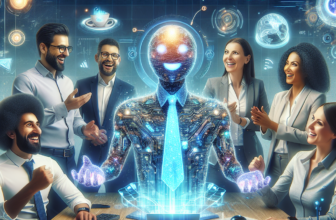Unlocking Potential: Designing Effective Employee Reward Systems for Maximum Engagement
Introduction
The modern workplace demands constant adaptation and innovation, especially when it comes to engaging employees. One of the most potent tools in cultivating a vibrant work environment is an effective employee reward system. These systems not only boost morale but also improve overall productivity. In this article, we delve into the intricacies of designing employee reward systems that maximize engagement, enhancing both employee satisfaction and organizational performance.
Section 1: Understanding Employee Motivation
Theories of Motivation
Understanding employee motivation is crucial for designing effective reward systems. Theories like Maslow's Hierarchy of Needs and Herzberg's Two-Factor Theory offer significant insights. Maslow categorizes needs from basic physiological requirements to self-actualization, while Herzberg differentiates between hygiene factors that prevent job dissatisfaction and motivators that enhance job satisfaction.
For employers, recognizing these theories helps tailor reward systems that foster motivation. Incorporating both intrinsic and extrinsic incentives can address various employee needs, creating a more engaging workplace.
Intrinsic vs. Extrinsic Motivation
Incentives can be broadly categorized into intrinsic and extrinsic forms. Intrinsic motivation arises from within the employee, fueled by passion or the desire for personal growth. In contrast, extrinsic motivation stems from external rewards like bonuses or recognition.
Research shows that while extrinsic rewards can effectively boost short-term performance, fostering intrinsic motivation is vital for long-term engagement. Employers should strive for a balance, crafting reward systems that align with employees' values and goals.
Section 2: The Role of Reward Systems
Types of Reward Systems
Reward systems can be classified into monetary and non-monetary categories. Monetary rewards like salaries, bonuses, and stock options directly impact employees' financial well-being. Non-monetary rewards include recognition programs, flexible work hours, and additional leave, which enhance overall job satisfaction.
Understanding the different types of reward systems allows organizations to select the most appropriate ones for their teams, fostering a culture of appreciation and engagement.
The Psychology Behind Rewards
The psychology behind rewards is rooted in behavioral science. Positive reinforcement encourages desired behavior, and reward systems are designed to reinforce specific actions. For instance, public recognition can motivate employees to perform at their best, while personalized feedback opens pathways for continuous improvement.
Employers must grasp this psychological framework to create reward systems that not only incentivize success but also build a culture of trust and collaboration.
Section 3: Elements of an Effective Reward System
Alignment with Company Goals
An effective reward system must align with the company's overarching goals. When employees understand how their individual performance contributes to broader organizational objectives, they are more likely to be engaged and motivated. It's essential to communicate how reward criteria connect with business outcomes to maximize buy-in and effort from employees.
Fairness and Transparency
Fairness is foundational to employee trust. A transparent reward system fosters confidence among employees, ensuring that everyone understands how rewards are earned and evaluated. Regular communication about criteria and processes is vital to maintaining this transparency and reinforcing a sense of fairness.
Section 4: Designing Your Reward System
Assessing Employee Needs
Before implementing a reward system, it is crucial to assess employees' needs and preferences. Surveys and feedback sessions can illuminate what types of rewards are most desired. Engaging employees in this process not only aids in designing a relevant system but also increases their emotional investment.
Creating Personalized Rewards
Personalization is key to effective reward systems. Recognizing individual contributions through tailored rewards fosters a deeper connection between employees and their roles. Offering choices in rewards can enhance engagement, allowing employees to select what motivates them most.
Section 5: Implementing Your Reward System
Communicating the System
Effective communication is crucial for successful implementation. Organizations must clearly articulate the objectives, criteria, and processes involved in the reward system. Launching employee workshops or informational sessions can help demystify the system and generate enthusiasm.
Training Managers
Managers play a significant role in the reward system's success. Training them to recognize and utilize the system effectively can ensure consistency and fairness. Engaging managers in discussions about reward criteria and handling feedback can enhance their ability to execute the system and foster a supportive culture.
Section 6: Measuring Effectiveness
Feedback Mechanisms
Measuring the effectiveness of a reward system requires constant feedback. Regular surveys and performance reviews can gauge employee satisfaction and identify areas for improvement. Organizations must be willing to adapt and refine their systems based on this valuable information.
Key Performance Indicators (KPIs)
Defining clear KPIs helps organizations measure the success of their reward systems. Metrics such as employee retention rates, productivity levels, and overall job satisfaction should be analyzed to gauge effectiveness. Linking these KPIs to business objectives can also demonstrate the tangible impact of reward systems on organizational success.
Section 7: Addressing Challenges
Common Pitfalls
Implementing a reward system can present challenges. Common pitfalls include misaligned incentives, lack of employee input, and failure to adapt over time. Acknowledging these pitfalls and addressing them proactively can significantly enhance the success of the reward systems.
Adapting to Change
Change is inevitable in any workplace. As business objectives shift and employee needs evolve, reward systems must adapt. Regularly reviewing and updating the system helps ensure ongoing relevance and effectiveness, contributing to sustained employee engagement.
Section 8: Future Trends in Reward Systems
Technological Innovations
The future of employee reward systems lies in leveraging technology. Tools such as performance management software can help track contributions and streamline the recognition process. Using data analytics can also enhance personalization, tailoring rewards to individual preferences and behaviors.
Emerging Best Practices
Emerging best practices emphasize agility and inclusivity. Creating dynamic reward systems that respond to real-time feedback and foster inclusiveness ensures that all employees feel valued and motivated. Additionally, incorporating sustainability and social responsibility into reward criteria can resonate deeply with modern employees.
Q&A Section
In this section, we'll answer common questions regarding designing effective employee reward systems:
- What is the main purpose of an employee reward system? An employee reward system aims to recognize and incentivize employee performance, ultimately enhancing job satisfaction and productivity.
- How can I determine the best rewards for my team? Conduct surveys and gather feedback to assess employees' values and preferences regarding rewards.
- How often should we evaluate our reward system? Regular evaluations, ideally semi-annually or annually, ensure that the system remains relevant and effective as company needs change.
- What are some non-monetary reward examples? Non-monetary rewards can include flexible work arrangements, recognition programs, and professional development opportunities.
- Why is fairness important in a reward system? Fairness fosters trust and motivation among employees, ensuring they feel valued and acknowledged for their contributions.
FAQ Section
Here are some frequently asked questions regarding employee reward systems:
- What is an effective employee reward system? An effective employee reward system is one that aligns with organizational goals, recognizes employee contributions fairly, and fosters engagement through tailored rewards.
- How can reward systems improve employee engagement? By incentivizing high performance and showing appreciation, reward systems can significantly enhance overall employee morale and motivation.
- Can rewards adversely affect motivation? Yes, poorly designed reward systems that create unhealthy competition can lead to decreased collaboration and engagement among employees.
- How will technology influence the future of employee reward systems? Technology will streamline processes like performance tracking and personalization, making rewards more effective and timely.
- What are some low-cost reward ideas? Low-cost rewards can include extra time off, public recognition, and opportunities for skill development.
Resources
| Source | Description | Link |
|---|---|---|
| Harvard Business Review | Insights on motivational theories and employee engagement strategies. | Visit HBR |
| Shrm.org | Wide range of resources on designing employee reward systems. | Visit SHRM |
| Gallup | Research findings on employee engagement and motivation. | Visit Gallup |
| Forbes | Articles on best practices for employee recognition and reward systems. | Visit Forbes |
| PWC Annual CEO Survey | Insights from top executives on employee engagement trends. | Visit PWC |
Conclusion
Implementing an effective employee reward system is not merely about offering bonuses; it is a strategic approach that aligns with company goals and fosters a culture of appreciation and engagement. Organizations that invest in designing thoughtful reward systems can unlock the potential of their workforce, resulting in enhanced productivity and employee satisfaction. By continually refining these systems based on feedback and changing needs, companies can ensure sustained success in an evolving marketplace.
Disclaimer
This article was created with assistance from artificial intelligence (AI) to enhance research and drafting efficiency. All content has been reviewed and refined by human contributors.










